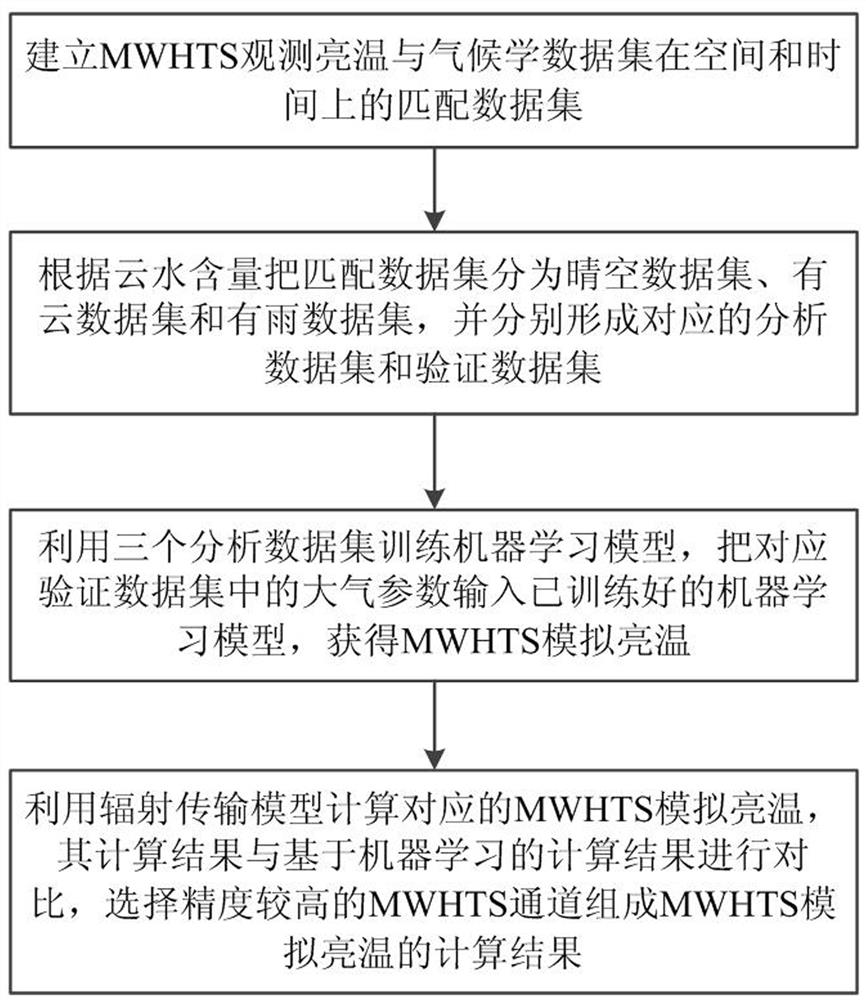MWHTS simulation brightness temperature calculation method based on deep neural network
A technology of deep neural network and calculation method, which is applied in the calculation of MWHTS simulated brightness temperature based on deep neural network, and the calculation field of MWHTS simulated brightness temperature. Increased linearity and other issues to achieve the effect of simple operation, improved calculation accuracy, and high calculation accuracy
- Summary
- Abstract
- Description
- Claims
- Application Information
AI Technical Summary
Problems solved by technology
Method used
Image
Examples
Embodiment 1
[0031] The climatology data set is selected as the reanalysis data set ERA-Interim of the European Center for Medium-Range Weather Forecasting (ECMWF). 25°N—45°N, 160°E—220°E), the data resolution is 0.5°×0.5°, using the temperature profile, humidity profile, cloud water profile, surface temperature, and surface humidity in this data set , surface pressure, 10m wind speed and cloud water content to calculate the simulated brightness temperature. The matching data set (1060162 groups) was established according to the matching rule that the time error is less than 10 minutes and the latitude and longitude error is less than 0.1° with the brightness temperature observed by FY-3D / MWHTS. In the matching data set, the clear sky data set is selected according to the cloud water content of 0, and the clear sky analysis data set (13810 groups) and the clear sky verification data set (3453 groups) are respectively established; the cloud water content is greater than 0 and less than 0.5m...
PUM
 Login to View More
Login to View More Abstract
Description
Claims
Application Information
 Login to View More
Login to View More - Generate Ideas
- Intellectual Property
- Life Sciences
- Materials
- Tech Scout
- Unparalleled Data Quality
- Higher Quality Content
- 60% Fewer Hallucinations
Browse by: Latest US Patents, China's latest patents, Technical Efficacy Thesaurus, Application Domain, Technology Topic, Popular Technical Reports.
© 2025 PatSnap. All rights reserved.Legal|Privacy policy|Modern Slavery Act Transparency Statement|Sitemap|About US| Contact US: help@patsnap.com



